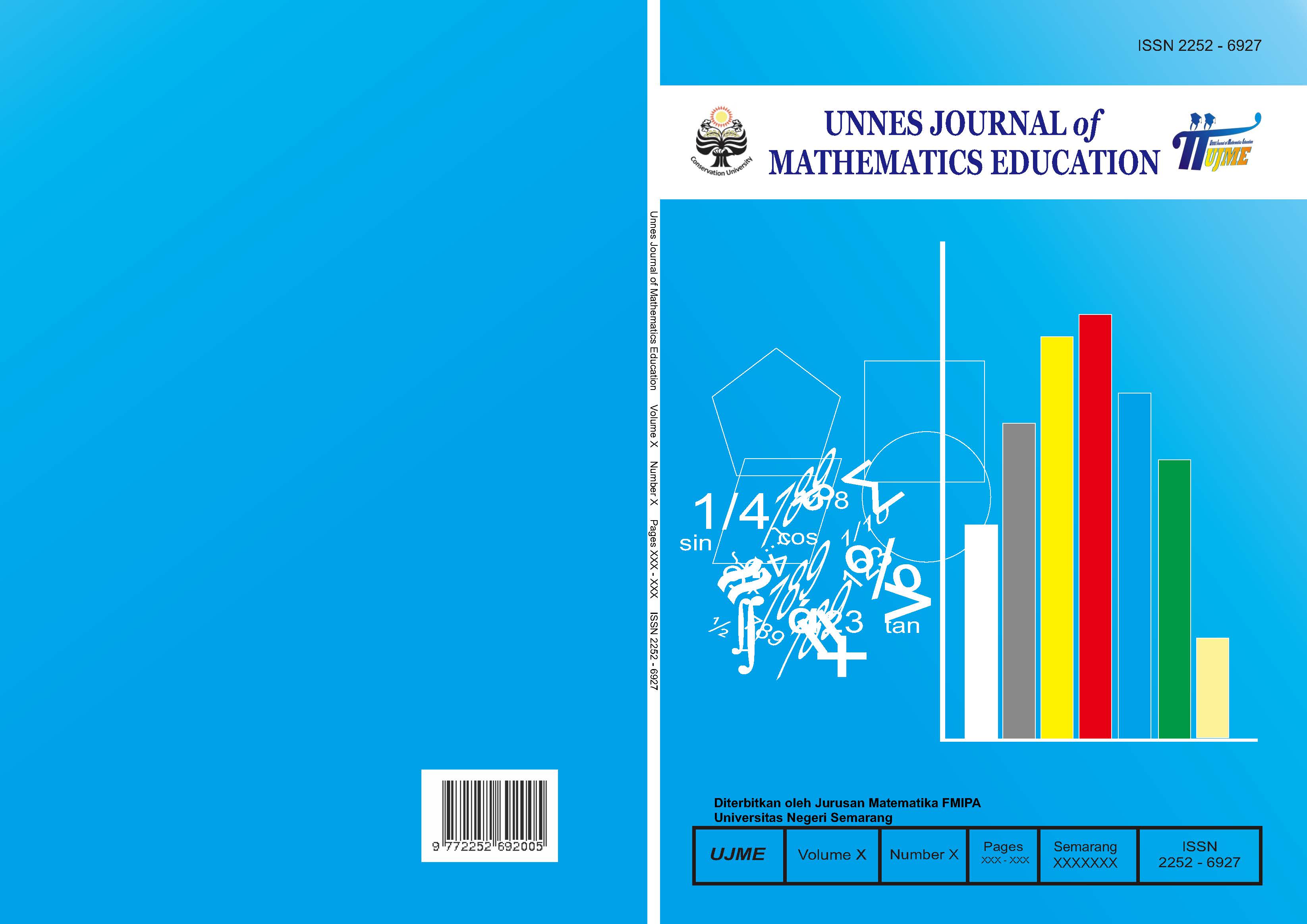KEMAMPUAN KOMUNIKASI MATEMATIS SISWA KELAS VII PADA PEMBELAJARAN MATEMATIKA DENGAN MODEL KNISLEY BERDASARKAN SELF EFFICACY
##plugins.themes.academic_pro.article.main##
Abstract
Tujuan  penelitian  ini adalah untuk mengetahui  keefektifan pembelajaran matematika  dengan  Model  Knisley  dan  mendeskripsikan  kemampuan komunikasi  matematis  siswa berdasarkan  self  efficacy. Jenis penelitian ini adalah penelitian mixed methods dengan explanatory sequential design. Populasinya adalah siswa  kelas VII SMP  N  13 Magelang.  Pengambilan sampel  dilakukan  dengan teknik random sampling, diperoleh kelas VII B sebagai kelas eksperimen dan kelas VII A sebagai  kelas kontrol.  Subjek penelitian  2 siswa self  efficacy  tinggi dan  2 siswa self  efficacy rendah. Pengumpulan data meliputi skala, tes, dan wawancara. Data  dianalisis  dengan uji proporsi,  uji perbedaan  rata-rata,  uji beda rata-rata berpasangan, dan deskriptif  kualitatif.  Hasil penelitian  menunjukkan bahwa  (1) proporsi kemampuan komunikasi  matematis  siswa  kelas eksperimen  mencapai ketuntasan  belajar klasikal 75%, (2) rata-rata kemampuan komunikasi matematis siswa  kelas  eksperimen  lebih  baik  dari  rata-rata kemampuan  komunikasi matematis  siswa  kelas kontrol,  (3) terdapat peningkatan rata-rata  kemampuan komunikasi  matematis  siswa kelas eksperimen dalam kategori tinggi yaitu sebesar 0,72,  (4) siswa  dengan  self efficacy  tinggi memenuhi empat  aspek  kemampuan komunikasi  matematis, dan (5) siswa dengan  self  efficacy  rendah  memenuhi tiga aspek kemampuan komunikasi  matematis.
The  purpose of this research was to determine  the effectiveness of mathematics  learning using Knisley's Models and describe students' mathematical communication skills based on self  efficacy.  The method  used in this  research is  a mixed  methods with explanatory sequential design. The population is the seventhÂgrade students of SMP N 13 Magelang. Sampling was conducted by random sampling  technique,  is obtained as an experimental class in seventh grade B and the seventh grade A as a control class. The subject of this research is 2 high self efficacy students  and 2 low self efficacy students. The data collection includes  scale, tests and interviews. Data were analyzed by proportion test, the average difference test,  different  average  in pairs  test, and a descriptive qualitative.  The results showed  that  (1) the  proportion of student's  mathematical  communication  skills  in experimental  class can reach  75% classical completeness,  (2) the  average of  student's mathematical communication skils experimental  class is better than the average of student's mathematical communication skils control class, (3) there is an average increase in students' mathematical communication skills experimental  class in high category amounts 0,72, (4) students with high self efficacy meet  four aspects of mathematical communication skills, and (5) students with low self efficacy meet three aspects of mathematical communication skills.
